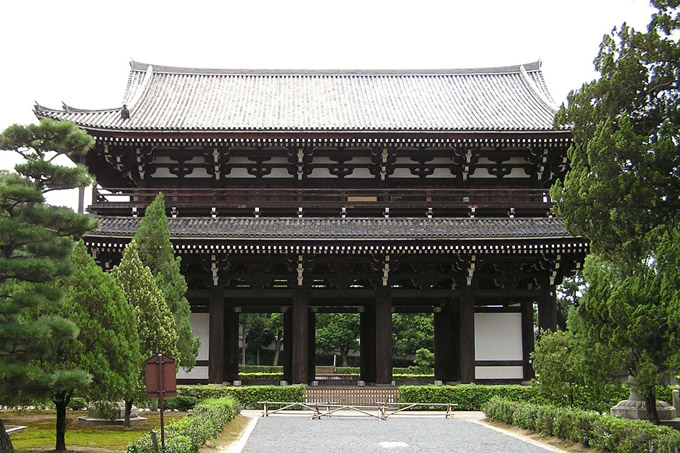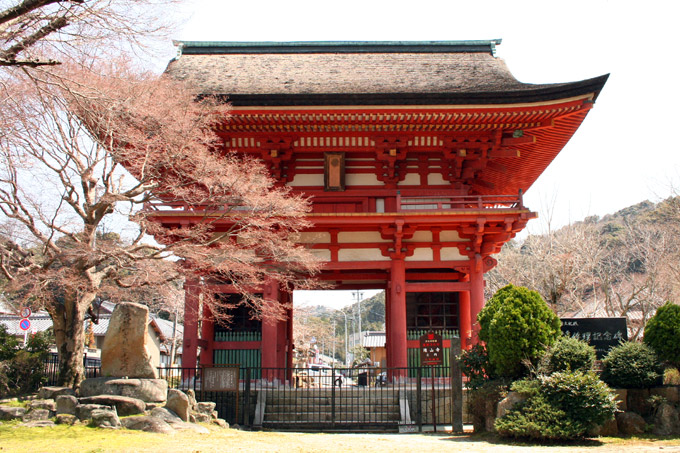| Also written Rε; often called *sangedatsumon OπEε meaning enlightenment gate. Main gate at a Zen temple. The size of the gate can be equated with the status of the Zen temple: the highest rank with a 2-storied 5x2-bay 3-entrance gate with a l-bay square shelter covering entrance to stairs to second story on each side *sanrou RL, Toufukuji Sanmon Oε (1405), Kyoto; the middle rank with a 2-storied, 3x2-bay l-entrance gate, Takisanji Sanmon κROε (Kamakura period), Aichi prefecture and a low ranking small temple with a single-storied, lx2-bay l-entrance gate. "Gedatsu πE" means emancipation from misery and illusion of three worlds resulting in enlightenment. Usually a Buddhist statue and the sixteen arhats *juuroku rakan \Z
Ώ are enshrined. Guardian figures are placed in the side bays of the first story of the 5x2 and 3x2 bay gates. Ceremonies are held on the second story. Since the main hall *hondou {° symbolizes the houkuu @σ and nirvana nehan ΈΟ, the entrances to it through the sanmon symbolize the three gates sangedatsumon ; kuumon σε, musoumon ³ε and musamon ³με. |




